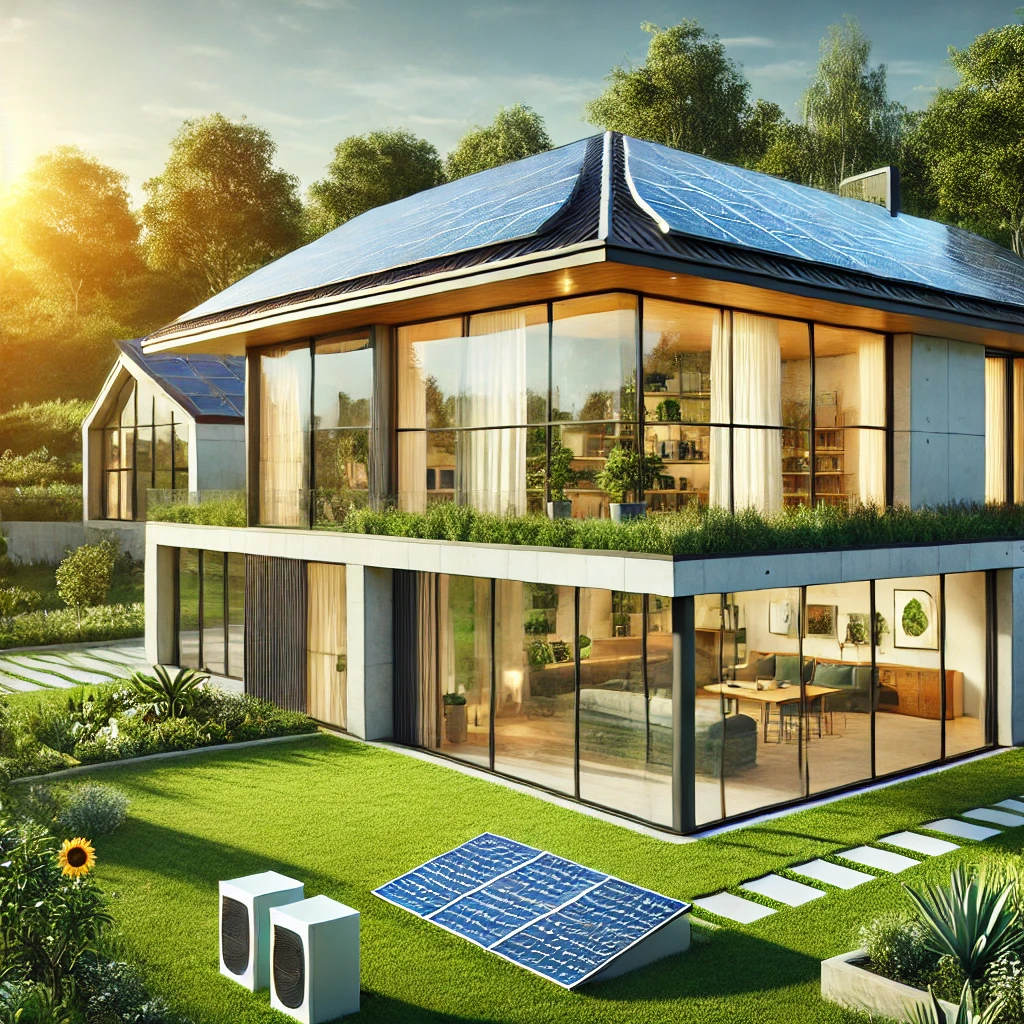
The Benefits of Passive House Design for Energy Efficiency
What is Passive House Design?
Ever heard of a home that practically heats and cools itself? That’s the magic of Passive House design! It’s a revolutionary approach to building that slashes energy consumption while maximizing comfort. Using airtight construction, superior insulation, and strategic ventilation, these homes maintain a stable indoor climate with minimal energy use.
Why Energy Efficiency Matters More Than Ever
With rising utility bills and climate change knocking at our doors, energy-efficient innovations are no longer a luxury—they’re a necessity. Passive House design offers one of the most effective climate change solutions by reducing reliance on fossil fuels and promoting sustainable living tips that benefit both homeowners and the planet.
How Passive House Design Works
1. Airtight Construction
Think of it like a thermos—no unwanted air sneaks in or escapes. This airtight seal reduces heat loss and ensures temperature stability, eliminating drafts and cold spots.
2. Super-Insulation
Layers upon layers of high-performance insulation keep indoor temperatures comfortable year-round. This means less need for heating in winter and cooling in summer.
3. Heat Recovery Ventilation (HRV)
A Passive House doesn’t just trap air—it circulates it efficiently. HRV systems extract stale air while bringing in fresh, pre-warmed air, ensuring healthy indoor air quality.
4. Triple-Glazed Windows
Standard windows? Not good enough. Passive Houses use triple-glazed windows that trap heat inside while letting in natural sunlight, further reducing energy demands.
5. Solar Power Integration
Want to take it a step further? Combining Passive House design with solar power for homes makes energy bills almost non-existent!
Top Benefits of Passive House Design
1. Drastically Lower Energy Bills
Who wouldn’t want to save up to 90% on heating and cooling costs? Passive Houses cut energy consumption to an absolute minimum, making them a dream for budget-conscious homeowners.
2. Unparalleled Comfort
No more freezing winters or unbearable summers. These homes maintain a steady temperature, creating a cozy indoor environment without hot or cold spots.
3. Healthier Indoor Air
Thanks to advanced ventilation systems, Passive Houses offer cleaner, fresher air—perfect for allergy sufferers or anyone who values good air quality.
4. A Future-Proof Investment
As energy costs rise and green technology reviews increasingly favor eco-friendly homes, Passive Houses will only gain value. Investing now means saving (and earning) in the future.
5. A Massive Win for the Planet
Fewer emissions, less waste, and a reduced carbon footprint—what’s not to love? Passive Houses are a crucial part of the solution for a more sustainable future.
Combining Passive House Design with Green Technologies
Want to supercharge your home’s efficiency? Pair Passive House principles with the latest top green building techniques and technologies:
- Solar Panels: Reduce reliance on the grid and harness the benefits of using solar energy at home.
- Energy-Efficient Appliances: Choose devices designed for minimal power consumption.
- Smart Home Systems: Automate lighting, heating, and cooling for maximum efficiency.
- Eco-Friendly Materials: Opt for sustainable, non-toxic building materials.
Debunking Myths About Passive House Design
1. "It's Too Expensive"
Yes, the initial cost is higher, but the long-term savings on energy bills make up for it—and then some.
2. "Passive Houses Are Only for Cold Climates"
Wrong! They work just as well in hot climates by keeping cool air inside and blocking heat.
3. "They Look Weird"
Not at all! Passive House design can be applied to any architectural style, from modern to traditional.
How to Get Started with Passive House Living
Ready to embrace an energy-efficient lifestyle? Here’s how:
- Research certified Passive House builders in your area.
- Consider retrofitting your existing home with Passive House principles.
- Combine Passive House features with how to live a zero-waste lifestyle for maximum sustainability.
- Explore financial incentives for green building in your region.
Final Thoughts
Passive House design isn’t just a trend—it’s a game-changer in the world of sustainable living. Whether you're looking to slash energy costs, improve home comfort, or contribute to climate change solutions, this innovative approach delivers on all fronts. With the right green technologies and energy-efficient innovations, you can build a future-ready home that benefits both you and the planet.
FAQs
1. Can Passive House principles be applied to renovations?
Absolutely! Many homeowners retrofit their existing homes with Passive House elements to improve efficiency.
2. Are Passive Houses completely off-grid?
Not necessarily, but they drastically reduce reliance on the grid, especially when combined with solar power.
3. Do Passive Houses require a specific design style?
No! Passive House techniques can be integrated into any architectural style.
4. How long does it take to build a Passive House?
It depends on the size and complexity, but typically, it takes no longer than a conventional home build.
5. What’s the biggest challenge of building a Passive House?
The biggest hurdle is finding experienced builders, but as green building techniques grow in popularity, more professionals are getting certified.